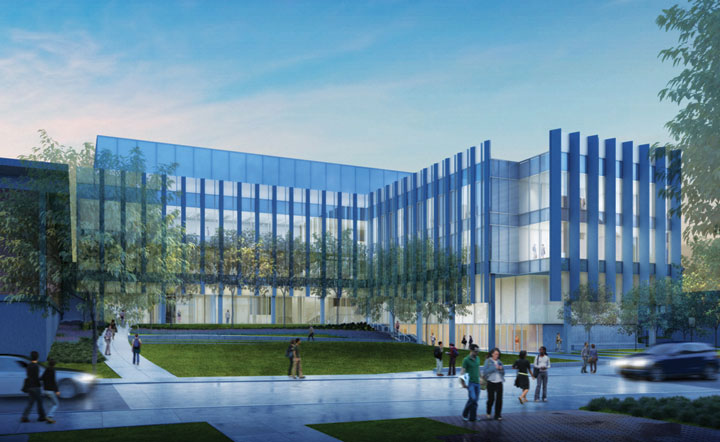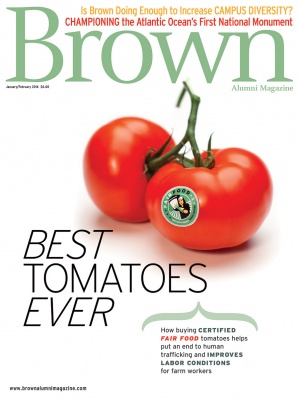Sangeeta Bhatia ’90—University trustee, MD-PhD, MIT professor—and keynoter at the groundbreaking for the new School of Engineering research building last fall—doesn’t just peer into the engineering future. She defines it.
Speaking before a crowd on a chilly Ocober night, Sangeeta abserved that engineering education must be "broad as well as deep"—with exposure across multiple disciplines—so that cross-disciplinary insights can be applied to complex global challenges, like climate change, renewable energy, and global health. Her research, which applies nanotechnology to human health, embodies this view.

As I listened, the case for robust interplay between engineering and liberal arts seemed stronger than ever. And it seemed truer to Brown’s core academic philosophy of research and teaching excellence, and service to society.
Liberal arts study prompts important reflection on the purpose and limits of knowledge. The critical thought this generates—combined with deep technical literacy gained through a rigorous curriculum in science fundamentals—prepares engineering students well for leadership.
Brown Engineering’s more than 150-year-old tradition of bold educational experimentation is premised on research collaboration across disciplines. For decades, engineering faculty, graduate students, and undergraduates have worked across disciplines to open new niches of discovery.
This rich interaction is a distinctive strength, one that could potentially give Brown Engineering outsized impact in the twenty-first century by preparing tomorrow’s engineering graduates to address the “grand challenges” of our time. It is, after all, engineers—ideally, in collaboration with faculty and students from other disciplines—who often translate research findings into practical applications.
Examples from Brown include: 1) a device to diagnose influenza strains; 2) a new system to remove heavy metals from contaminated soil; and 3) medical-implant nanomaterials to fight infection and promote healthy cell growth.
Brown has been quick to encourage synergies between engineering and entrepreneurship, with an eye toward today’s innovation economy. Inviting engineering students to be Engaged Scholars, via a National Academy of Engineering Grand Challenge or a Business, Entrepreneurship, and Organizations capstone, is central to shaping a global, socially conscious entrepreneurial ethos.
And the Engineering School’s PRIME track, which educates Master’s students in technology entrepreneurship, underscores our strengthening of engineering research’s translational dimension and our University-wide ecosystem for supporting ventures driven by discoveries in Brown labs.
More and more, engineers and entrepreneurs are starting and leading companies. This is evident in the proliferation of Jewelry District–based technology and science start-ups infused by a Brown engineering and health sciences axis.
As Dean Larry Larson noted at the groundbreaking, solutions to today’s “nanoscale” engineering challenges “require interdisciplinary collaboration, team-based science, and engagement from a broad set of stakeholders. The new research building will enable this mode of scientific and technological inquiry to flourish here at Brown for many decades to come.”
The new engineering building—sited on College Hill adjacent to Barus and Holley and designed as a twenty-first century model for creativity and innovation—will attract visionary new faculty and become a place where faculty and students partner to pursue cutting-edge research in robotics, neural-restorative technology, and other areas.
In a memorable coda to her groundbreaking speech, Sangeeta Bhatia observed that modern engineers stand “at the center of solving the world’s greatest challenges. We are technologists. We are humanists. We are multidisciplinary. We are innovators.”
I believe she is right. This is an engineering future that is distinctly Brown.





